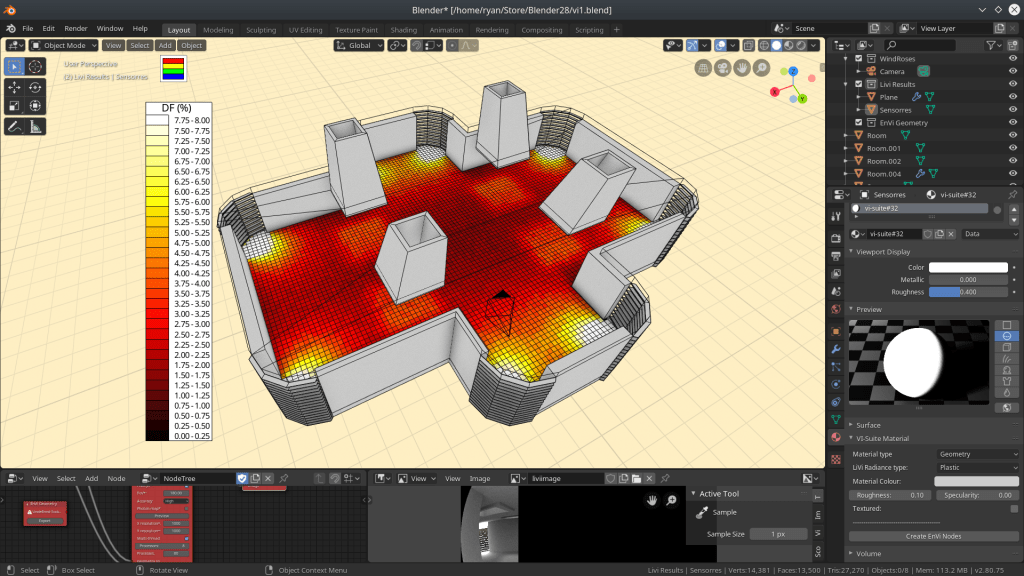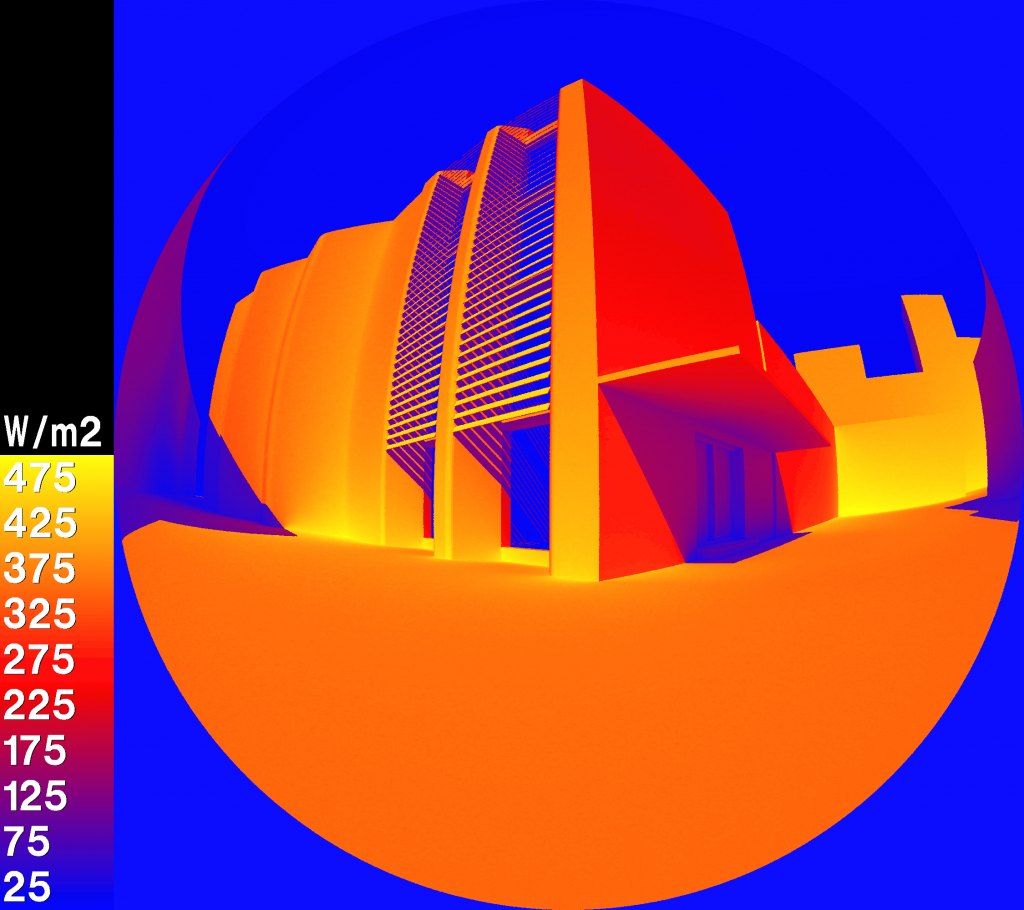I’ve just uploaded a video tutorial for sun path and simple shadowing analysis in v0.6.
The video covers sun path creation and the features of Blender’s viewport shading for single and multiple sun shadow creation.
There’s a couple of things I forgot to mention in the video. One is that when creating a new sun path you’ll notice that a new collection is created called ‘SunPath’ and the sun path object is placed within it. As mentioned in the previous video you should avoid putting your own geometry into this collection. Another is that the colours of the sun path base can also be altered with the material properties associated with the sun path base object.
And one final thing. The time used for the sun position is local solar time, not clock time. Any local daytime saving, or time zone adjustment, should be factored in by the user.
Link to the video is below and to those who celebrate it I wish you a very Merry Christmas.
Ryan




